Imagine a dish that encapsulates the soul of Louisiana’s culinary tradition, where every spoonful tells a story of heritage, flavor, and communal joy.
Crawfish étouffée, a quintessential Louisiana classic, stands as a testament to the rich tapestry of flavors that define Cajun and Creole cooking.
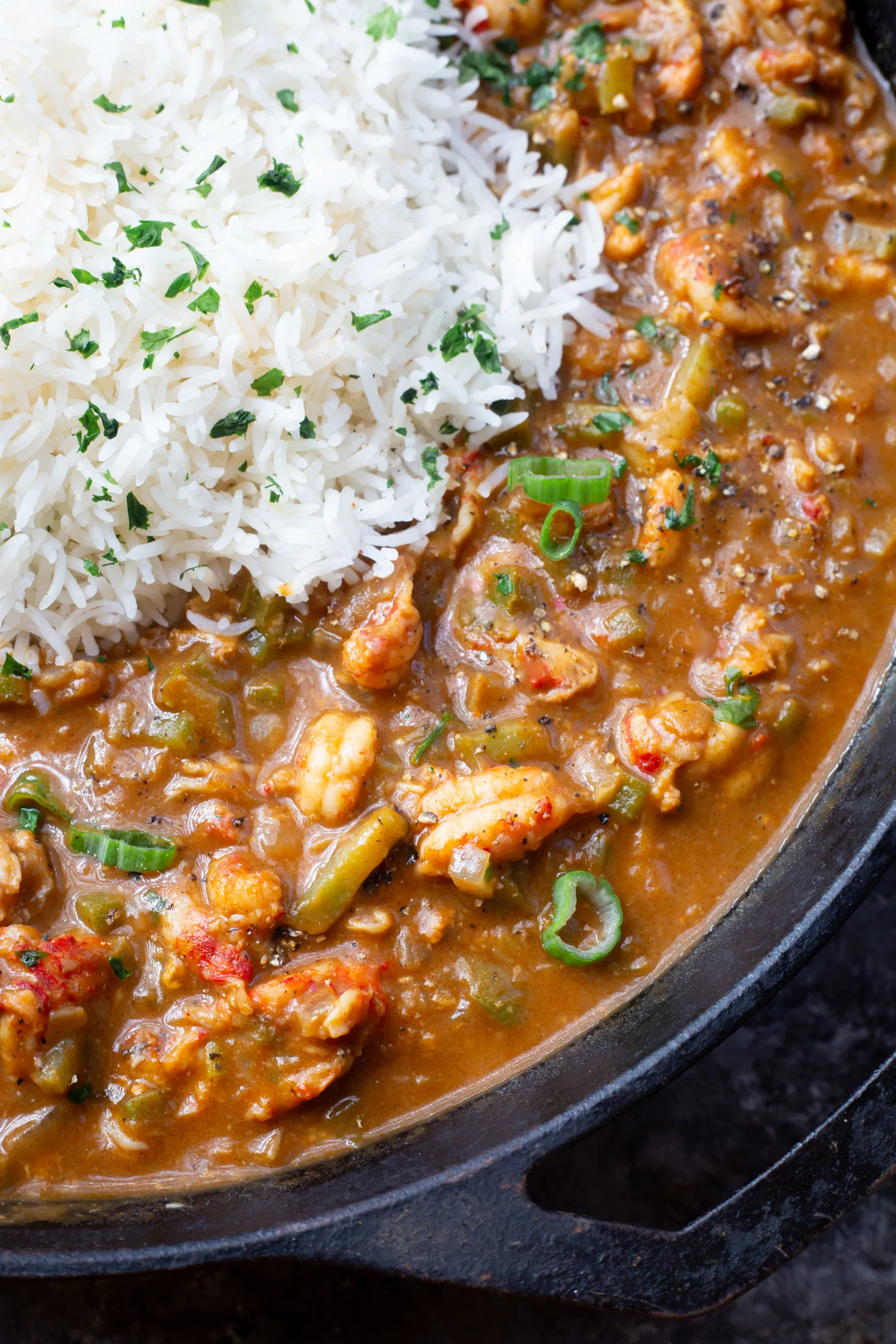
This classic Louisiana dish, with its tender crawfish tails smothered in a thick, roux-based sauce, spiced to perfection, and served over a bed of fluffy rice, is more than just a meal; it’s a celebration of culture, tradition, and the beauty of homestyle country cuisine.
So, pull up a chair, grab your favorite hot sauce, and let me share with you my take on this beloved Louisiana classic.
It’s a recipe that pays homage to the rich culinary heritage of the Bayou State, tailored with a cajun twist that I hope will make you feel right at home, no matter where you are.
Understanding Cajun Cuisine: Dark Rouxs & The Holy Trinity
Creole cuisine and Cajun cuisine are two cornerstone culinary traditions of Louisiana, each with its own unique flavors, ingredients, and histories.
Crawfish Etoufee is a distinctly Cajun recipe and originates from the French-speaking Acadian immigrants deported from Canada to the Acadiana region of Louisiana.
It’s a rustic, “country” cuisine that developed out of necessity, using locally available ingredients like fresh crawfish, green peppers, and brown roux.

The Holy Trinity or Cajun Trinity, is a mixture of vegetables commonly used in a specific ratio, in numerous dishes in Cajun Cooking. The ratio is 50% onion to 25% green bell pepper and 25% celery. All the vegetables are chopped into small dice and sauteed in a dark brown roux before they’re transformed into a sort of rich gravy or thick stew.
Etoufee, along with other classic cajun dishes, uses this exact same procedure of first preparing brown roux + adding holy trinity + then adding seafood and seasonings. If you’re going to learn to cook cajun, 80% of the work is this procedure over and over again.

A dark roux is the base for nearly every one-pot cajun recipe and it’s one of the more challenging cooking techniques you can master. A dark roux starts off just like any basic roux, with equal parts fat to flour. You’ll see a higher volume of roux in dishes that call for a dark roux because the longer you cook a roux, the less thickening power it has.
So, instead of 1-2 tablespoons of butter and flour which starts a blonde roux to create a sauce for macaroni and cheese or other classic easy recipes, dark rouxs more likely start with 1/2 cup oil or butter to 1/2 cup flour.
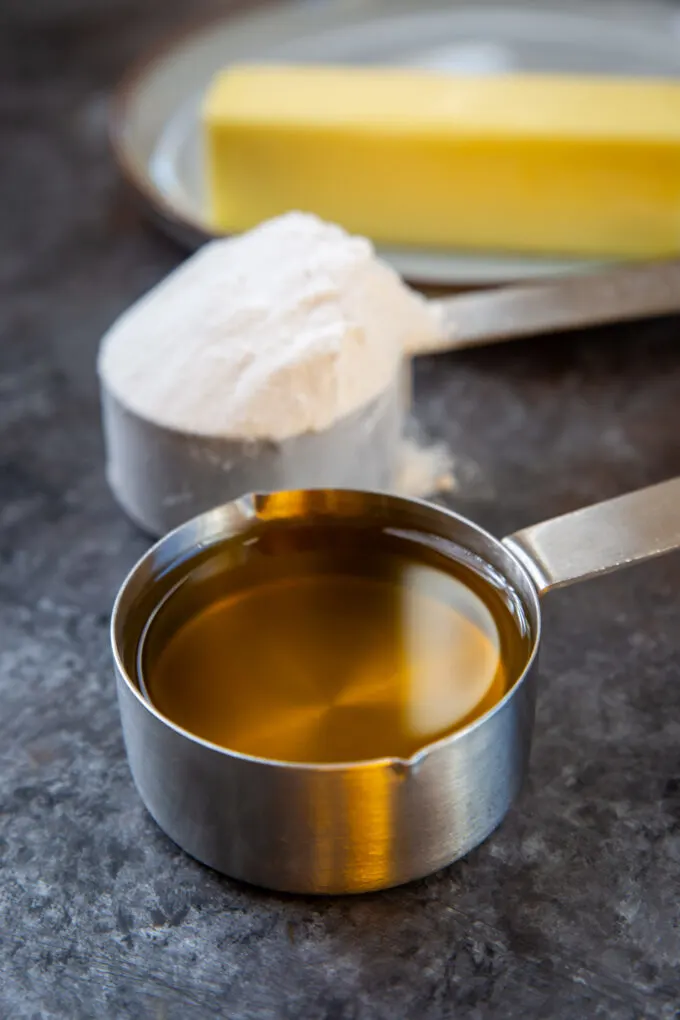

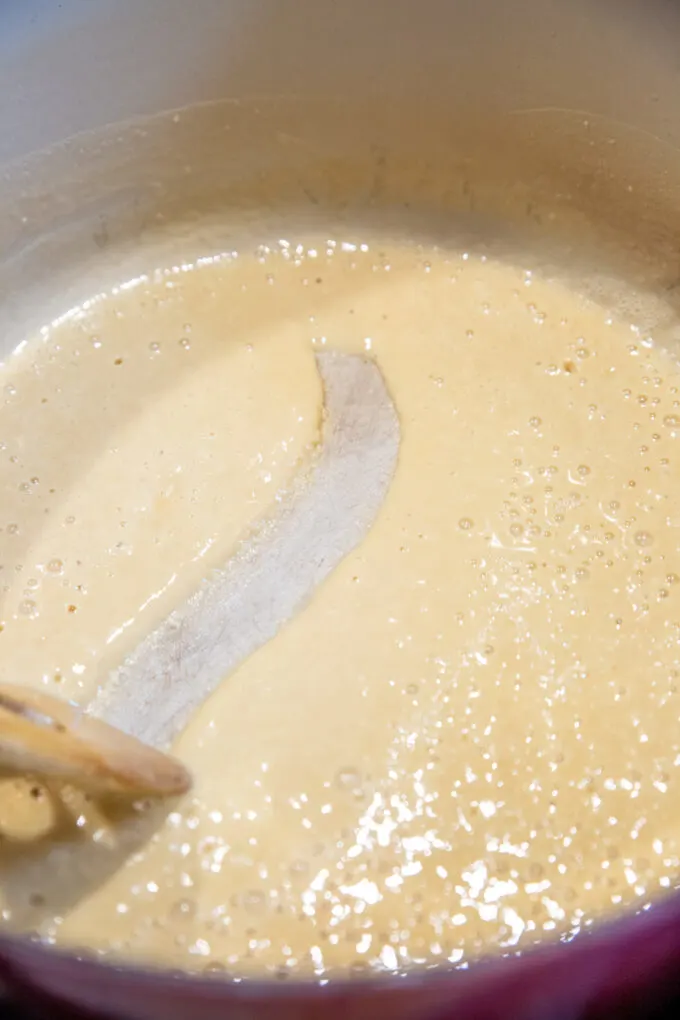
The two ingredients are heated in a heavy-bottomed pot until they mix to form a creamy-looking substance.
This mixture is the roux and as it goes through all the shades from white to blonde to light brown to peanut to dark brown as it cooks. This brown roux becomes rich, nutty, and deeply flavorful infusing the dishes that are built off of it with iconic Cajun flavor.
Dark brown roux flavor is unique to Cajun Cooking and the first step in mastering the ability to successfully cook cajun recipes.
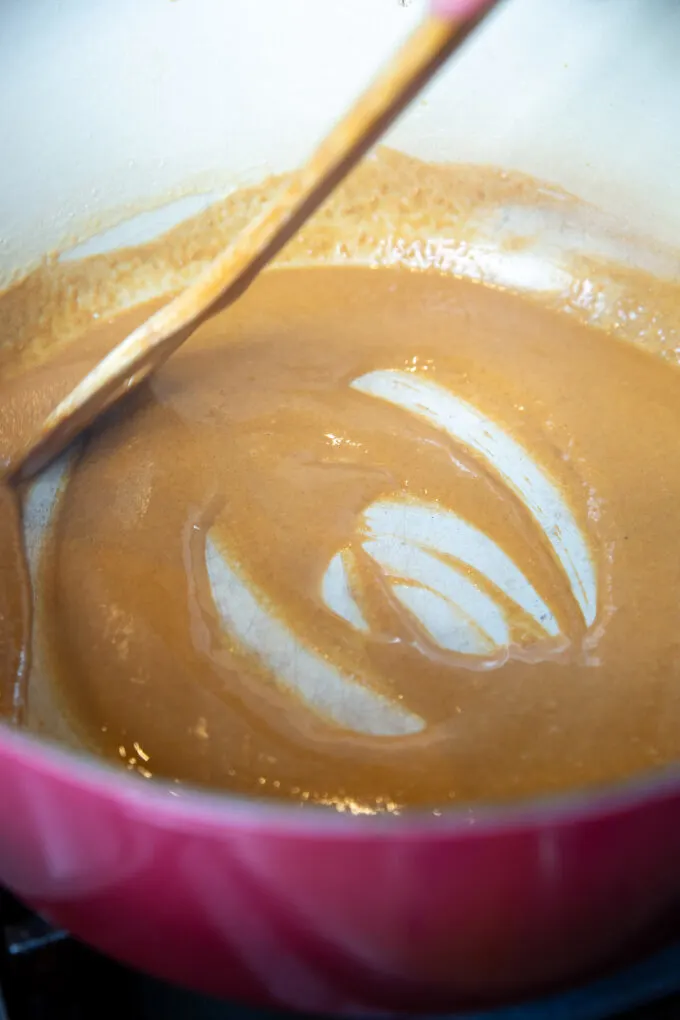
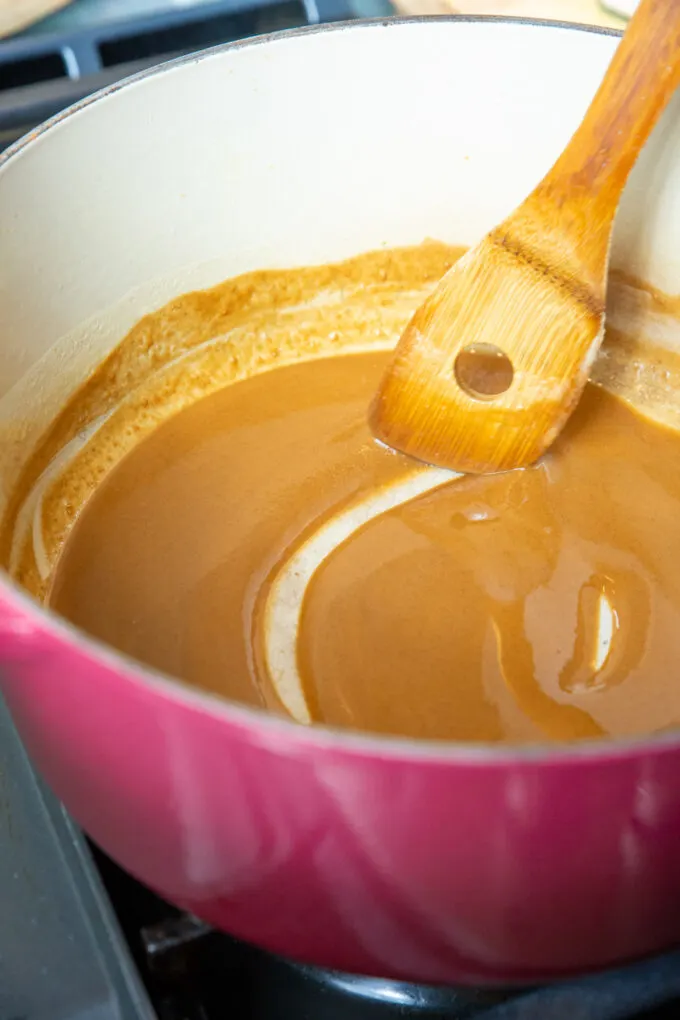

From Gumbo, to Etouffee, to Jambalaya this procedure is repeated throughout Cajun Cooking. So, having the correct tools is critical to successfully pulling off a dark roux without burning it.
For this reason, a gumbo pot, dutch oven, or heavy-bottomed stock pan with high sides is helpful when learning to create brown roux.
How To Make A Dark Roux
1. To make a dark roux you’ll add equal parts fat and flour to a dutch oven, and cook over medium to low heat.
2. Starting with a whisk you’ll mix the two elements until they look like a creamy gravy. Then, you may choose to switch to a high-temperature spatula or wooden spoon and continue cooking over low heat as the mixture gradually darkens.
3. Continue stirring. This can take a while so be ready to stand and stir for 30-40 minutes your first time.
Subsequent roux-making sessions will decrease in time as you become more confident handling darkening roux, which can quickly burn if you aren’t careful. If it burns, you’ll have to start over so give yourself time to learn.

Tips To Increase Your Chance Of Sucess with Dark Rouxs
- Chop all of your vegetables first and have them in bowls next to the stove to be added the moment the roux reaches dark brown.
- Have your seafood or chicken stock gently simmering in a small pot nearby so that you can add it the moment you are ready.
- Have another person present to take over stirring if you get tired or need a break.
- Do not stop stirring, the roux will burn.
- Use a heavy-bottomed pot, Dutch Oven, Le Creuset, or other pot you trust to insulate your roux from temperature fluctuations as you figure out what temperature range let’s you comfortably cook your roux. (Experienced cooks can work with roux over higher temperatures and get to a darker shade faster. This all comes with time.)
- Many cooks start with a whisk and then switch to a wooden spatula or high-temperature spatula as the roux begins darkening to better stir the roux mixture and avoid burning.
How To Make Cajun Crawfish Etouffee Recipe
1. Chop all of your vegetables, and have your seasonings nearby so that you can work fast.
2. Measure out your fat and flour into the special pot you’ve selected for your roux.
3. Have seafood stock or chicken broth ready for adding at a moment’s notice. I keep mine hot in a small saucepan on the back of the stove.
4. Your crawfish tail meat should be picked from the crawfish, deveined, and free of crawfish shells. Reserve in a bowl.
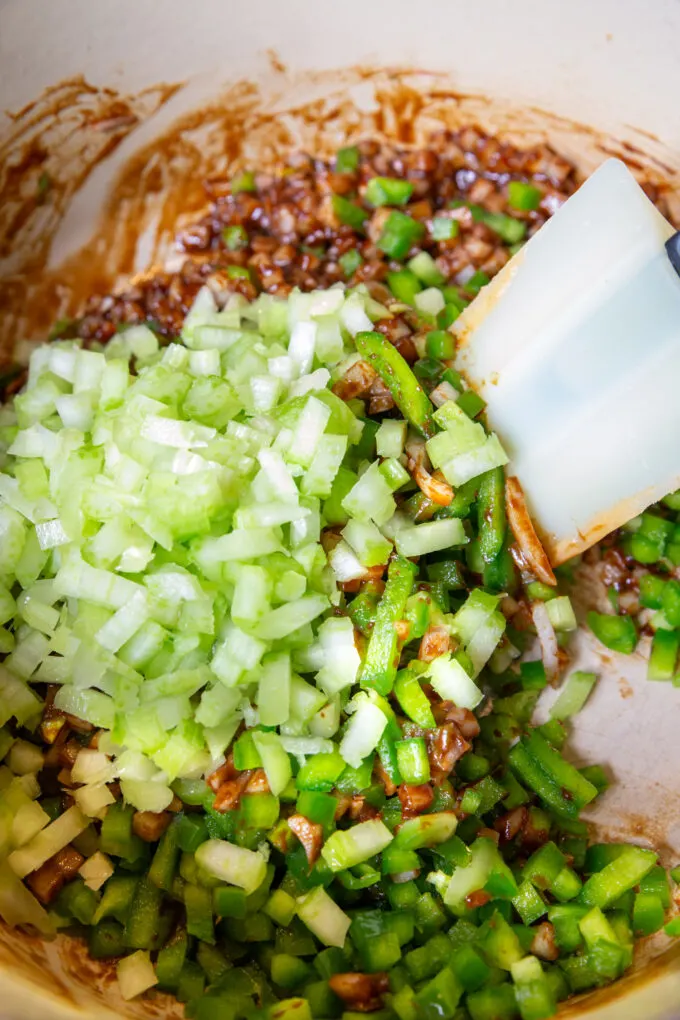
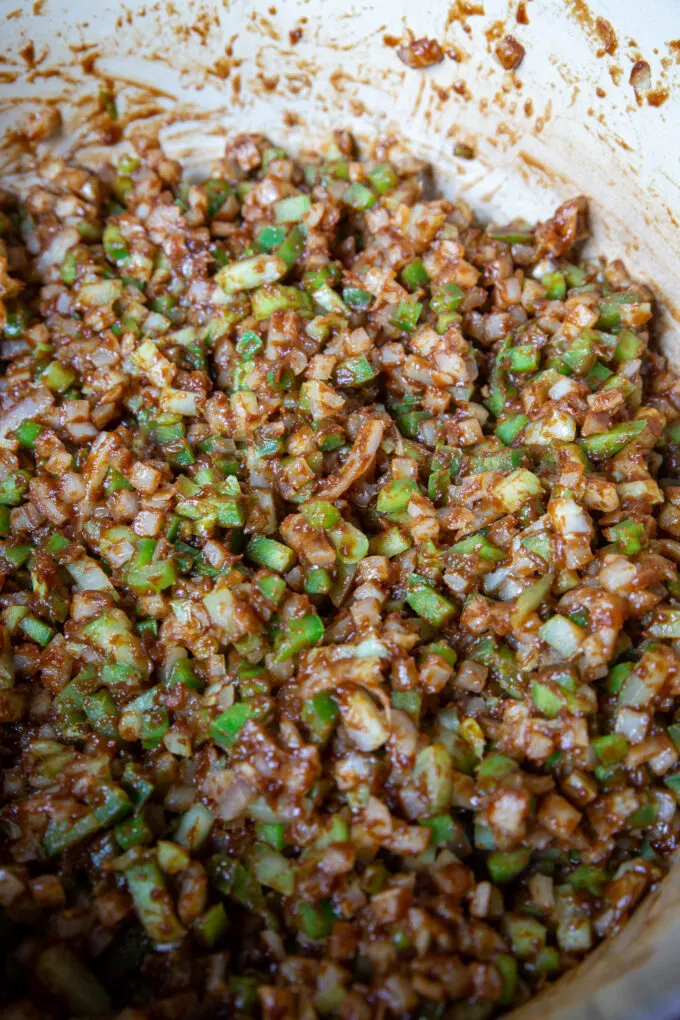

5. Create the brown roux, and when dark brown begin adding the holy trinity of onions, bell peppers, and celery. Saute until soft. About 3 minutes. Add garlic.
6. Add in the stock or broth and whisk to combine and thicken into a rich brown sauce.
7. Bring to a simmer and add in crawfish, cajun or creole seasoning, hot sauce, bay leaf, and other herbs.
8. Simmer gently 10-20 minutes to let the flavors develop, and serve with white rice.
Tips For Extra Tasty Etouffee and Substitutions
- The tastiest crawfish to use are leftover crawfish tails from a crawfish boil, which have been poached in that spicy classic broth.
- Real Louisiana crawfish tails from the various bayous in the state are worth the extra trouble to track down during crawfish season.
- Replace a few tablespoons of oil with bacon fat or butter for additional flavor.
- Crawfish etouffee tastes even better the next day when the flavors have had a chance to develop. Leftovers can be stored in an airtight container for 2 days.
- You can substitute shrimp for the crawfish in this recipe and have shrimp etouffee.
- In New Orleans, this popular dish is served with french bread and a side salad to round out the meal.
- Make this recipe your own by seasoning with authentic Louisiana hot sauce or a squeeze of fresh lemon juice, Worcestershire sauce, homemade cajun seasoning, or cayenne pepper.

When To Make Crawfish Etouffee and How To Serve
Crawfish Etoufee is a classic dish cooked anytime during crawfish season in South Louisiana, however, for the rest of us, it can be quite a bit of work.
We love serving this dish after crawfish boils to use up extra crawfish which we peel and keep in the freezer in small zip-lock baggies. This becomes an easy recipe to make if you have saved crawfish from your yearly boil.
Cajun food holidays like Mardi Gras are a great time to indulge in Louisiana cooking and the delicious crawfish are just coming into season.
Have questions? Need help? Have an addition or a suggestion to a recipe? Drop me a comment below!
If you make this recipe, I would LOVE to see it!
Tag me on Instagram @UrbanCowgirl and use #UrbanCowgirl to be featured. 🙂
Follow us on Social Media using the links below!!
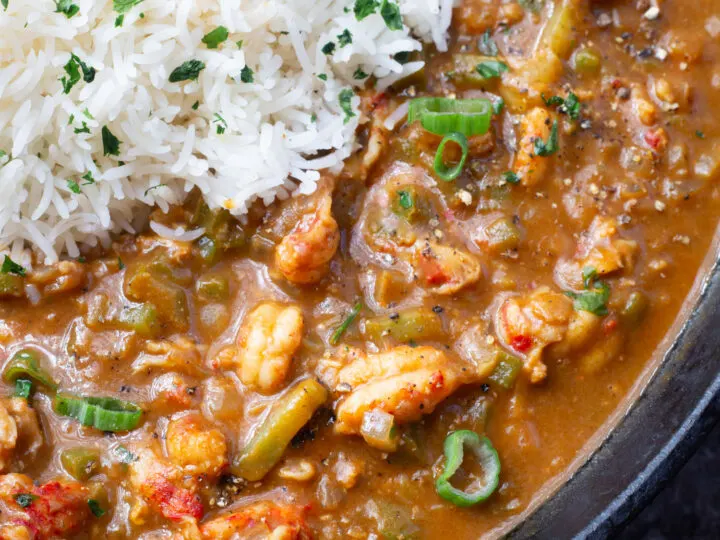
Crawfish Etouffee Recipe
Crawfish Etouffee, with its tender crawfish tails smothered in a thick, roux-based sauce, spiced to perfection, and served over a bed of fluffy rice, is more than just a meal-- it's a celebration of culture.
Ingredients
Dark Roux
- ½ c. oil (may replace 2 tablespoons with bacon fat if you have it)
- ½ c. flour
Holy Trinity
- 3 stalks celery (About 1 ½ cups), chopped
- 1 green bell pepper (About 1 ½ cups), chopped
- 1 large onion, (2-3 cups)
- 5 garlic cloves, minced
Etouffee Ingredients
- 2 cups, seafood stock (can use chicken stock or shrimp stock)
- 2 pounds crawfish tails, cooked and peeled
- 2 dried bay leaves
- 1 teaspoon cajun seasoning
- 1 teaspoon kosher salt (wait until the end to add)
- ½ teaspoon dried thyme
- ½ teaspoon white pepper
- 1/2 teaspoon black pepper
- *Optional cayenne to taste, for spice level appropriate for your family
- 3 tablespoons Louisiana hot sauce or fresh lemon juice to season
- 4 cups steamed white rice, cooked according to package directions
Garnish
- ¼ cup fresh parsley, chopped
- 4 green onions, chopped fine
Instructions
Chop all of the vegetables into small dice and place them in bowls near the stove before you begin.
Place the stock in a separate small saucepan near the stove and keep warm. The stock doesn’t have to be piping hot to add to the roux, but it cannot be cold.
In a large, heavy-bottomed stock pot add the oil and flour. (You may replace 2 tablespoons of oil with bacon fat for extra flavor if you keep your bacon grease.)
Over medium heat, whisk the flour and oil mixture until creating a blonde roux. This occurs when the flour and oil combine and are light yellow in color.
Switch to a high temperature spatula or wooden spatula to scrap the bottom of the pan with greater ease as it cooks.
Continue stirring the roux as it goes from light brown to a peanut butter color to a rusty brown, and then finally to a dark roux. You may have to turn the heat down as the roux darkens to prevent burning. Never leave the roux alone or walk away from the pot or it will burn and you will have to start over.
Get the roux as dark as you feel comfortable and prepare to move rapidly. Turn the heat down to low if it isn’t already there.
Add the chopped onion and toss well. (As you add the vegetables the roux will steam, darken, and bubble wildly.) Cook 1-2 minutes. Add in the celery and green bell pepper and cook an additional minute. Add the garlic and cook 30 seconds, mixing well.
Switch back to your whisk and gently pour in the stock, in small increments, whisking well as you go.
Add the cajun seasoning, thyme, white pepper, and bay leaves, and bring to a simmer.
Add in the crawfish tails and fold gently.
To taste, add in the hot sauce or lemon juice for acidity, and after tasting add in the teaspoon of kosher salt if needed. You may also season with additional cajun seasoning or red pepper if you like it extra spicy.
Turn off the heat and keep covered until ready to serve.
Serve atop hot, cooked white rice. Sprinkle with fresh parsley and green onions as garnish.
Notes
Crawfish Etouffée along with all cajun dishes requiring a dark roux is best cooked in a heavy-bottomed pot such as a Le Creuset, cast iron pot, or good quality stock pot. This helps avoid burning the roux before it is finished darkening.
Nutrition Information:
Yield:
8Serving Size:
1Amount Per Serving: Calories: 426Total Fat: 17gSaturated Fat: 1gTrans Fat: 0gUnsaturated Fat: 14gCholesterol: 158mgSodium: 562mgCarbohydrates: 38gFiber: 2gSugar: 3gProtein: 30g
This nutritional information is provided as a courtesy as an estimate only. Consult with a dietician for precise estimates. This website makes no claims that the nutritional values listed are accurate.
